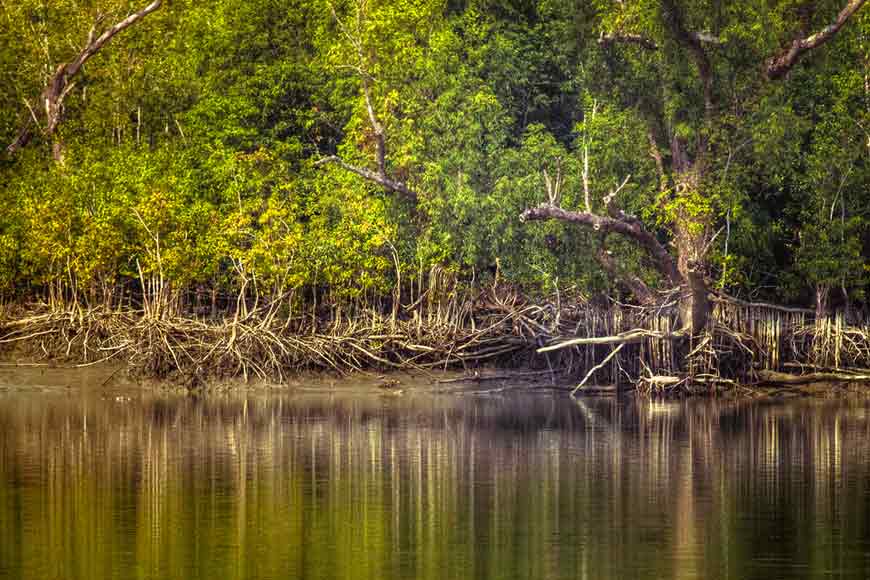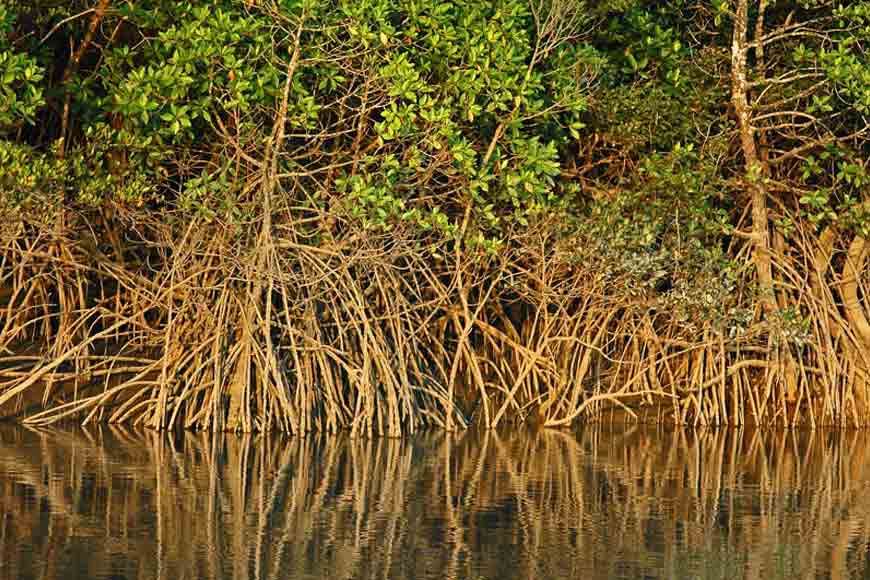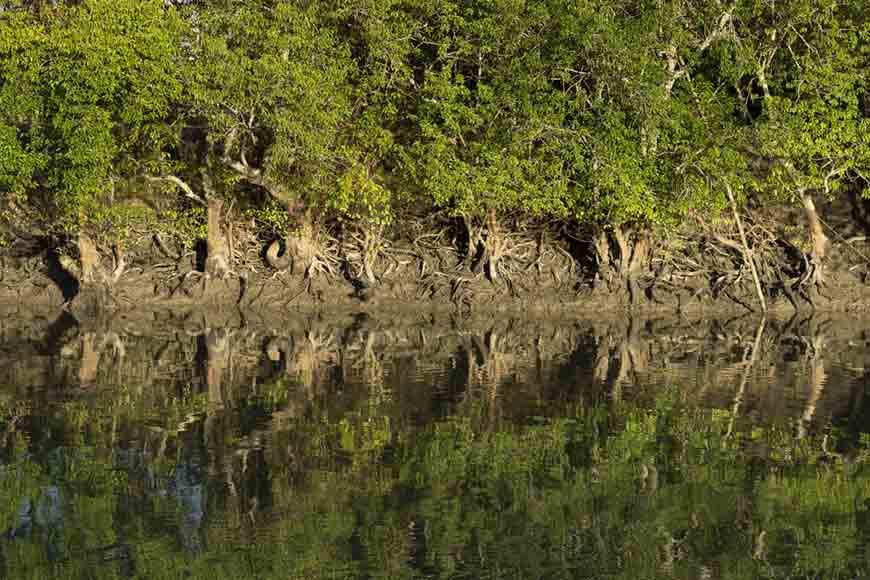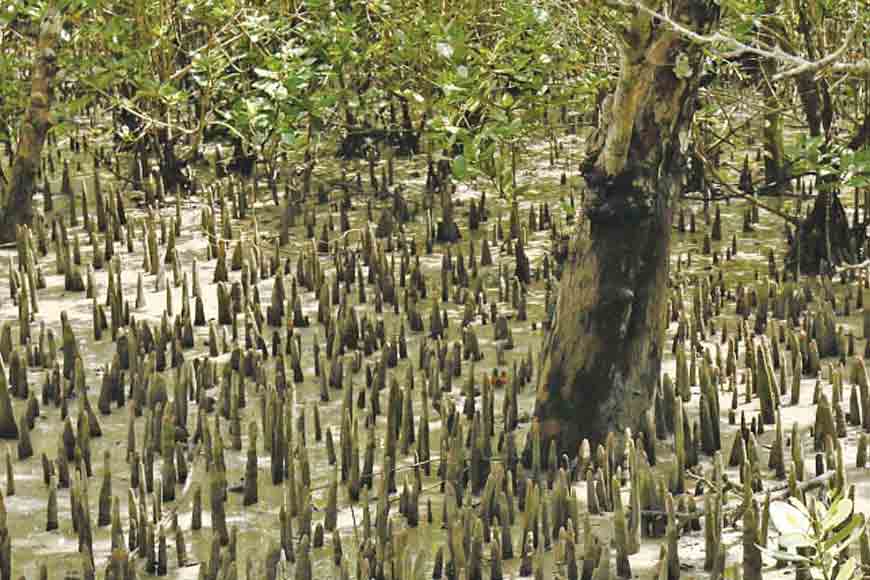Mangroves to the rescue of river banks along Kolkata - GetBengal story

Floods and erosion pose a serious problem in the lower Ganga region, particularly in West Bengal. According to official reports, on average 8 km of land is engulfed annually by the river in West Bengal. The construction of the Farakka Barrage has disrupted the dynamic equilibrium of the river and hindered the natural oscillation of the river within its meandering belt in the Nadia, Malda, and Murshidabad districts. The frequency of riverbank erosion along the Ganga has increased over the years and has been taking a toll in Nadia, Malda, and Murshidabad districts. Environmentalists and green activists have been working to sensitize people living in Howrah, Kolkata, North, and South 24 Parganas to the serious threats posed by soil erosion along the river bank but people seldom paid any heed until disaster struck.
Last year, a team of river and environment conservationists visited India’s largest botanical garden — Acharya Jagadish Chandra (A.J.C) Bose Indian Botanic Garden in Howrah for a detailed study of the site. It has about 12,000 specimens of as many as 1,000 species. It is considered the ‘largest man-made plant kingdom’. During an inspection of the 1.8 kilometre stretch of the river bank lining the garden, they were appalled to observe how soil erosion of Ganga is taking its toll on the garden. It has about 12,000 specimens of as many as 1,000 species. It is considered the ‘largest man-made plant kingdom’. The Botanic Garden is under threat due to severe land erosion by the Ganga River. They have expressed their concern while stating parts of the garden’s fencing and inner plantation may get washed away soon by the swelling river. Flood management and restoration schemes are imperative to save the garden. Not wholly unrelated are the fragile embankments that tend to break up during heavy rain and high tides.

Although the problem of erosion of the Ganga in Kolkata is still manageable, there is no denying that it is affecting several places. Recently, an inspection team of the state administration noticed erosion on the banks of the Ganga around Nimtala Ghat in North Kolkata. From Bichali Ghat in the south to Ratan Babu Ghat in the north, the river bank in Kolkata is about 16.5 km long but land erosion is gradually increasing due to lack of maintenance work and claiming tracts of land along the banks. After a brainstorming session, the Kolkata Municipal Corporation (KMC) finally decided to plant mangroves to stall erosion.
Interestingly, part of the river bank in Kolkata and Howrah is under Shyama Prasad Mukherjee Port Trust and partly under the Army, but if the river banks are damaged, the residents of the neighbouring areas will be affected. That is why a concrete plan to plant mangroves has been taken by KMC.
We know mangroves are abundant in the Sundarbans mainly because the mangroves thrive on saline water. Hence, it comes as no surprise that there is a lot of skepticism involved with the decision. Many have been wondering if the plan to install mangroves on the banks of the Ganga in Kolkata succeed. According to a report by the Union Ministry of Environment, Forest and Climate Change, the area of mangroves in Bengal increased by 1.66 square kilometres in 2021 as compared to 2019. Of these, 95 percent have increased in the Sundarbans area. The remaining five percent increased on the banks of the Ganga in Hooghly and North 24 Parganas districts. This report makes it clear that mangroves are adopting to thrive beyond the Sundarbans.

Several environmentalists have found that over the decades, the nature of the soil has transformed due to global warming or climate change. As the water level is increasing, likewise the salinity in the water is also increasing. That is why, for the past several years, mangroves can be spotted growing around the river in places other than the Sundarbans. This has given the impetus to KMC to study the soil condition and make a foolproof plan to plant mangroves and prevent river bank erosion in and around Kolkata.
Mangroves are hardy plants and require very little or no maintenance. These plants require very little space to grow, hence a large number of saplings can be planted close to each other. As they grow, they form a strong wall and prevent storms from hitting the land. Experts believe mangroves also reduce air pollution.

The Kolkata Municipal Corporation (KMC) is all set to hold meetings with the Port authorities and the Army soon to discuss ways to prevent soil erosion caused by Ganga. Plans are afoot to present a proposal at the meeting to install mangroves. Civic officials are hopeful that since the issue involves ways to prevent river bank erosion, there should be no objection to the plan. After reaching a consensus on the matter, the civic authorities will work on the blueprint and decide on how much mangroves can be planted along the banks of the Ganga. Botanists and experts working with mangroves will be consulted to decide on the species of trees which will be perfect for planting along the Ganga River bank.










